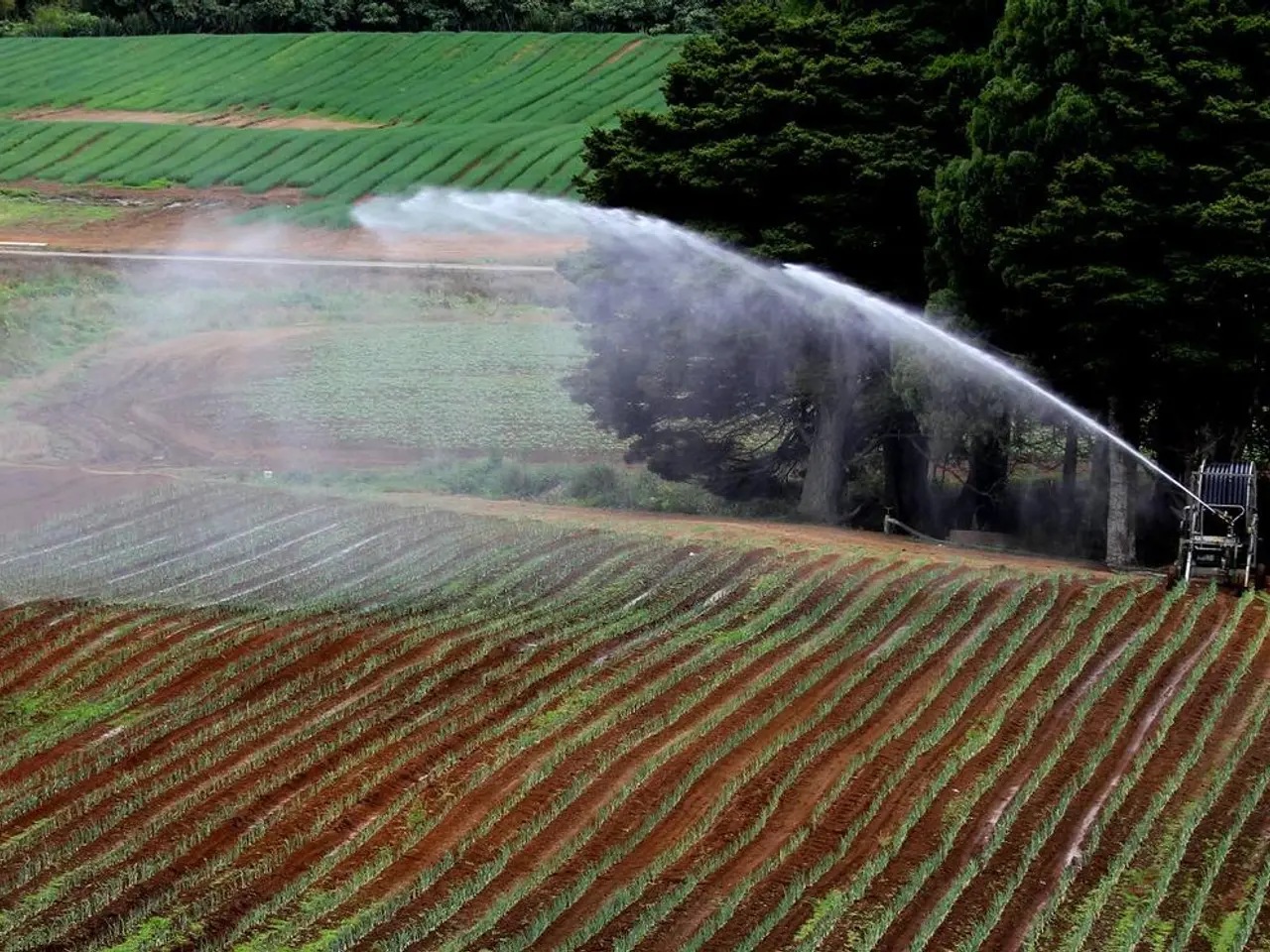Strategies for Revitalizing Soil Nutrients Unveiled among Farming Community
Farmers worldwide are embracing sustainable soil management practices to promote soil health, boost productivity, and reduce environmental impacts. These practices focus on crop rotation, cover cropping, conservation tillage, and adding organic matter, collectively improving soil structure, fertility, microbial activity, and carbon sequestration.
Key practices include:
- Crop Rotation: Rotating different crops each season breaks pest, disease, and weed cycles, helping to restore nutrient balance and prevent depletion. Incorporating legumes in rotation enhances natural nitrogen fixation, boosting soil fertility over time.
- Cover Cropping: Planting cover crops like legumes, clover, rye, or grasses during off-seasons protects soil from erosion, increases organic matter, improves water retention, supports nutrient cycling, and suppresses weeds naturally.
- Conservation Tillage: Minimal or zero tillage techniques reduce soil disturbance, preserving soil structure and organic matter, while reducing erosion and greenhouse gas emissions.
- Adding Organic Matter: Farmers apply compost, manure, or use crop residues to increase organic matter content, which supports healthier plant growth and stronger soil resilience.
- Rotational Grazing and Multi-species Livestock Integration: Some farmers integrate livestock grazing with crop production. Rotational grazing and incorporating multiple animal species improve soil organic matter and nutrient cycling by stimulating plant growth and soil biological activity.
These sustainable soil management practices collectively help restore nutrient cycling, improve soil physical properties, boost biological activity, and promote long-term soil health and farm productivity while reducing environmental impacts such as erosion and excessive chemical inputs.
Farmers often start with soil testing to guide nutrient application precisely, avoiding overuse of fertilizers and maintaining balanced soil nutrient levels to support sustainable crop production.
Other innovative practices include no-till farming, which involves sowing seeds directly into the soil without churning the top layer, reducing soil erosion, nutrient runoff, and greenhouse gas emissions. Macauley Farms in Livingston, New York, successfully adopted no-till farming practices, increasing their annual net income by over $25,000 with a 135% return on investment.
Water management is another crucial aspect of sustainable agriculture. Smart water management uses technology and data analytics to enhance water efficiency and prevent water scarcity. Water-efficient irrigation systems ensure crops receive sufficient water without wasting resources, while water harvesting is a method of collecting excess water for agriculture use. Water-smart landscaping involves grouping plants with similar water needs together to conserve water resources.
Field buffers, consisting of trees, shrubs, and grasses, help prevent nutrient loss along water bodies. Additionally, water recycling involves treating and reusing wastewater, reducing the demand for freshwater resources. Using native plant species in agriculture saves water resources and supports biodiversity.
In sum, sustainable soil management relies on integrating biological, physical, and chemical approaches—crop diversification, soil cover, minimal disturbance, organic amendments, and livestock integration—to build fertile, healthy soils that sustain agriculture and ecosystem health over the long term.
- Scientists in the health-and-wellness sector are exploring the potential benefits of incorporating principles of sustainable soil management, such as cover cropping and conservation tillage, into health-and-wellness practices, as they promote soil health and may also lead to improved nutrient content in produce, thus contributing to overall consumer nutrition.
- To boost the health-and-wellness aspect of their farms, some forward-thinking fitness enthusiasts are adopting farming techniques they've learned about, like no-till farming and smart water management for irrigation, as they believe these practices can also improve personal fitness and exercise routines by connecting the farmer to the land, encouraging a healthier lifestyle, and even offering opportunities for outdoor exercise and relaxation time.




